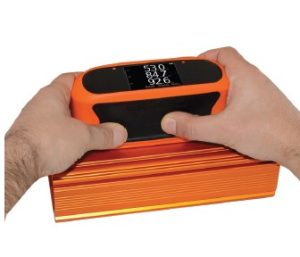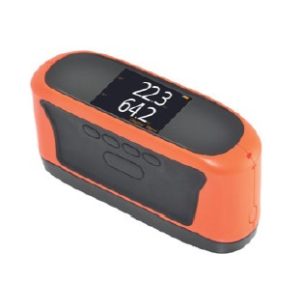Gloss Limits
Surface gloss is one of the most important parameters used to complete the appearance of an object. Surface gloss is an optical property that indicates how well a surface reflects
light in a specular reflection (mirror-like) direction.
Surface gloss measurement is made with electronic gloss meter devices called Glossmeter. The light flux emanating from the light sources of these devices is reflected from the
measured surface at certain angles (such as 25°, 60°, 80°) and reaches the sensors in the device.
The proportional calculation of the light flux reaching the sensor and the light flux coming out of the light source is made. The measured gloss is based on black glass with a refractive index of np = 1.567. Assuming the plane is ideally polished, the plane is
used for natural light beams.
The value of the gloss emanating from the light source while specular reflection takes place is defined as 100.0 GU. As a numeric value, GU (Gloss Unit) is the unit of gloss. The amount of light flux reflected from the surface in GU is calculated in proportion to 100 GU. The calculated luminance unit can be specified as a percentage as well as a numerical value.


Regardless of the surface gloss level of a product, the manufacturer must ensure consistency in meeting the engineered requirements. For example, for a high gloss product
such as white goods, the customer’s perception of uniform gloss throughout the product body is critical. Therefore, surface gloss control in the quality control process requires high accuracy.
Gloss limits are acceptable tolerance levels as defined by the user and allow them to compare readings with predefined peak values or validated samples (standards). This
allows the user to ensure consistency of product and parts, for example in an automobile production line.
Using the Elcometer 480 Glossmeter, you can save and store up to 40 different limit standards that consist of the nominal or target value that is required for readings and
differential, low and high limits for gloss and haze. This then allows the user to take a reading that they deem as “good” and ensure the following samples meet the same
standard.
References
• Heron, C. (2021), Gloss Limit Standards, The E News, 2 – 2021, 18.
• https://www.elcometer.com/media/480-accurate_1.jpg
Burak Demirağ
Sales Engineer
Mega Danışmanlık Temsilcilik Dış Ticaret A.Ş.


 Regardless of the surface gloss level of a product, the manufacturer must ensure consistency in meeting the engineered requirements. For example, for a high gloss product
such as white goods, the customer’s perception of uniform gloss throughout the product body is critical. Therefore, surface gloss control in the quality control process requires high accuracy.
Gloss limits are acceptable tolerance levels as defined by the user and allow them to compare readings with predefined peak values or validated samples (standards). This
allows the user to ensure consistency of product and parts, for example in an automobile production line.
Using the Elcometer 480 Glossmeter, you can save and store up to 40 different limit standards that consist of the nominal or target value that is required for readings and
differential, low and high limits for gloss and haze. This then allows the user to take a reading that they deem as “good” and ensure the following samples meet the same
standard.
References
• Heron, C. (2021), Gloss Limit Standards, The E News, 2 – 2021, 18.
• https://www.elcometer.com/media/480-accurate_1.jpg
Burak Demirağ
Sales Engineer
Mega Danışmanlık Temsilcilik Dış Ticaret A.Ş.
Regardless of the surface gloss level of a product, the manufacturer must ensure consistency in meeting the engineered requirements. For example, for a high gloss product
such as white goods, the customer’s perception of uniform gloss throughout the product body is critical. Therefore, surface gloss control in the quality control process requires high accuracy.
Gloss limits are acceptable tolerance levels as defined by the user and allow them to compare readings with predefined peak values or validated samples (standards). This
allows the user to ensure consistency of product and parts, for example in an automobile production line.
Using the Elcometer 480 Glossmeter, you can save and store up to 40 different limit standards that consist of the nominal or target value that is required for readings and
differential, low and high limits for gloss and haze. This then allows the user to take a reading that they deem as “good” and ensure the following samples meet the same
standard.
References
• Heron, C. (2021), Gloss Limit Standards, The E News, 2 – 2021, 18.
• https://www.elcometer.com/media/480-accurate_1.jpg
Burak Demirağ
Sales Engineer
Mega Danışmanlık Temsilcilik Dış Ticaret A.Ş.